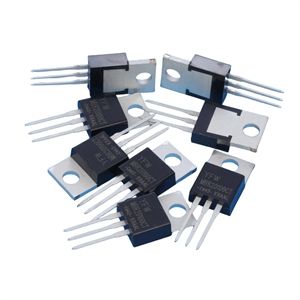Date:2024-09-24 Categories:Product knowledge Hits:423 From: Guangdong Youfeng Microelectronics Co., Ltd(YFW)
What is the principle of transient suppression diode and what is its function?
1、 The function of transient suppression diode
To put it simply, if the voltage surge that the circuit can withstand is not higher than DC24V, then weld a 26V TVS diode at the power supply. When the supply voltage does not exceed 26V, the TVS diode is in a high resistance state; When a pulse higher than 26V suddenly comes from the power supply, the TVS diode can quickly clamp the circuit voltage to 24V, ensuring the safety of the circuit board.
In general, the functions of transient suppression diodes are:
1. Adding TVS diodes to the signal and power lines can prevent the failure of microprocessors or microcontrollers caused by momentary surges, such as electrostatic discharge effects, AC power surges, and noise from switching power supplies.
2. The electrostatic discharge effect can release pulses exceeding 10000V and 60A, and can last for 10ms; However, typical TTL devices will be damaged when exposed to 10V pulses exceeding 30ms. By using TVS diodes, it is possible to effectively absorb pulses that can cause device damage and eliminate interference caused by switches between buses (Crosstalk).
3. Placing the TVS diode between the signal line and ground can prevent unnecessary noise from affecting the data and control bus.
2、 What is a transient suppression diode
Transient Voltage Suppressor (TVS), abbreviated as TVS diode, is determined by the P-N junction area, doping concentration, and chip resistance in terms of its electrical characteristics. Its ability to withstand surge currents is directly proportional to its P-N junction area. TVS is widely used for the protection of semiconductors and sensitive devices, typically for the protection of secondary power and signal circuits, as well as anti-static measures. Its characteristics are fast reaction speed (at the PS level), small size, high pulse power, and low clamping voltage. The 10/1000 μ s wave pulse power ranges from 400W to 30KW, and the peak pulse current ranges from 0.52A to 544A; The breakdown voltage has a series of values ranging from 6.8V to 550V, making it easy to use circuits with different voltages.
3、 Working principle of transient suppression diode
The device is connected in parallel in the circuit. When the circuit is working normally, it is in a cut-off state (high resistance state), which does not affect the normal operation of the circuit. When the circuit experiences abnormal overvoltage and reaches its breakdown voltage, it quickly changes from a high resistance state to a low resistance state, providing a low impedance conduction path for instantaneous current and clamping the abnormal high voltage within a safe level, thereby protecting the protected IC or circuit; When the abnormal overvoltage disappears, it returns to the high impedance state and the circuit works normally.

Previous: Classification, Structure, and Principle of MOSFET